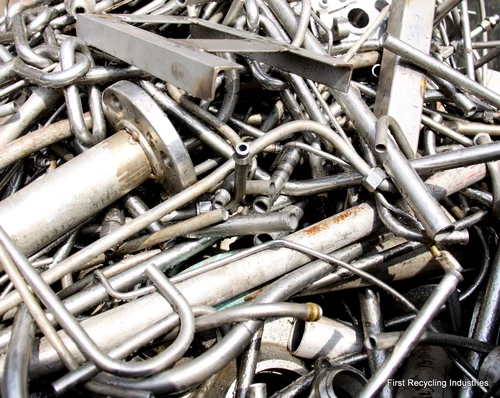Introduction
In India, stainless steel plays a vital role in driving economic growth across multiple sectors, including construction, automotive, and manufacturing. With the rising demand for stainless steel, the need for sustainable practices like recycling stainless steel scrap has become paramount. This blog explores the significance, benefits, market trends, and future opportunities of stainless steel scrap in India.
What is Stainless Steel Scrap?
Stainless steel scrap refers to waste or leftover stainless steel from various sources like industrial manufacturing, construction debris, or discarded household items. It is a valuable resource due to its high recyclability and retained properties, including durability, strength, and corrosion resistance.
The Significance of Stainless Steel Scrap
- Environmental Benefits: Recycling stainless steel reduces mining activities, saving natural resources and lowering greenhouse gas emissions.
- Economic Value: The stainless steel scrap industry generates jobs and contributes to India’s growing economy.
- Resource Efficiency: By recycling scrap, industries reduce the need for raw material extraction, promoting sustainable development.
- Sustainability Goals: Incorporating recycled materials aligns with global environmental and sustainability goals.
Sources of Stainless Steel Scrap in India
- Industrial Waste: Factories and manufacturing units produce significant quantities of scrap during production processes.
- Demolition Projects: Old buildings and structures provide stainless steel components for recycling.
- Household Items: Discarded appliances, kitchenware, and tools are a rich source of stainless steel scrap.
- Import Sources: India imports a considerable amount of stainless steel scrap from countries like the USA, Japan, and UAE to meet its industrial demands.
Recycling Process of Stainless Steel Scrap
The recycling process involves a systematic approach to convert scrap into reusable material:
- Collection: Scrap is gathered from various sources, including factories, demolition sites, and households.
- Sorting and Segregation: Scrap is sorted based on grade, quality, and type to ensure efficient processing.
- Shredding: Large pieces are broken into smaller sizes for easier handling and melting.
- Melting: The shredded scrap is melted in electric arc furnaces.
- Purification: The molten material is purified to remove impurities and ensure high quality.
- Recasting: The purified stainless steel is molded into sheets, bars, or other usable forms.
Benefits of Recycling Stainless Steel Scrap
- Economic Gains: Recycling reduces production costs for industries and minimizes waste disposal expenses.
- Energy Efficiency: Recycling stainless steel consumes significantly less energy compared to producing it from raw ores.
- Environmental Protection: The process prevents landfill waste and reduces the carbon footprint of industries.
- Preservation of Resources: Recycling ensures the conservation of critical raw materials like chromium, nickel, and iron.
Stainless Steel Scrap Market Trends in India
- Rising Domestic Demand: With rapid urbanization and industrialization, India’s demand for stainless steel is continuously growing.
- Policy Support: Government initiatives encouraging recycling and sustainable practices have boosted the scrap industry.
- Global Trade Dynamics: India’s active participation in exporting processed scrap adds to its global economic footprint.
- Technological Advancements: The adoption of modern technologies has streamlined recycling processes, enhancing efficiency and profitability.
Challenges in the Stainless Steel Scrap Sector
- Collection Efficiency: Scrap collection in India is still largely unorganized, leading to inefficiencies.
- Quality Issues: Mixed or contaminated scrap requires extensive processing, increasing costs.
- Awareness Gaps: Many businesses and consumers remain unaware of the benefits of recycling stainless steel.
- Infrastructure Limitations: Lack of advanced recycling facilities hinders large-scale operations.
Opportunities in Stainless Steel Scrap Recycling
- Export Potential: India can strengthen its position in the global market by exporting high-quality recycled stainless steel.
- Collaboration Opportunities: Industries and recycling units can work together to streamline the supply chain.
- Government Incentives: Policy reforms and incentives can attract investments in advanced recycling technologies.
- Increased Industrial Use: With sustainability becoming a priority, industries are likely to adopt more recycled stainless steel in their production processes.
How Stainless Steel Scrap Contributes to Sustainable Development
- Circular Economy: Recycling promotes a circular economy, where resources are reused instead of discarded.
- Carbon Reduction: The process significantly lowers CO2 emissions compared to manufacturing from raw materials.
- Community Impact: The industry supports local economies by generating jobs and providing livelihood opportunities.
- Waste Management: Recycling reduces the burden on landfills, creating a cleaner and healthier environment.
Future Outlook for Stainless Steel Scrap in India
The future of the stainless steel scrap industry in India looks promising, driven by increasing awareness, technological advancements, and supportive policies. With industries prioritizing sustainable materials and global demand for stainless steel rising, India has the potential to become a leader in stainless steel recycling.
Conclusion
Stainless steel scrap is a critical component of India’s move toward sustainable growth. By recycling stainless steel, the nation can reduce waste, conserve resources, and achieve its sustainability goals. With the right strategies, investments, and policies, the stainless steel scrap sector can become a cornerstone of India’s industrial and environmental progress.

